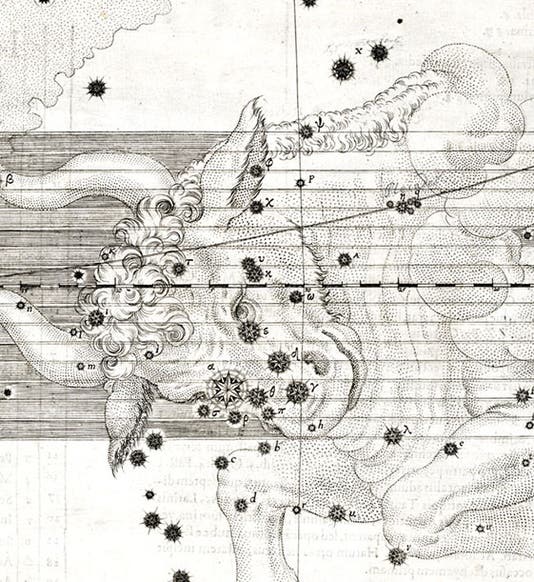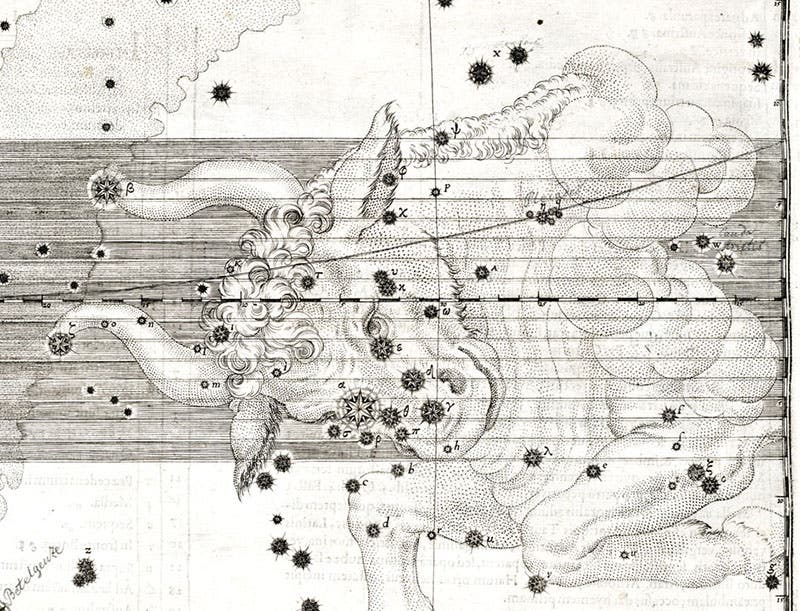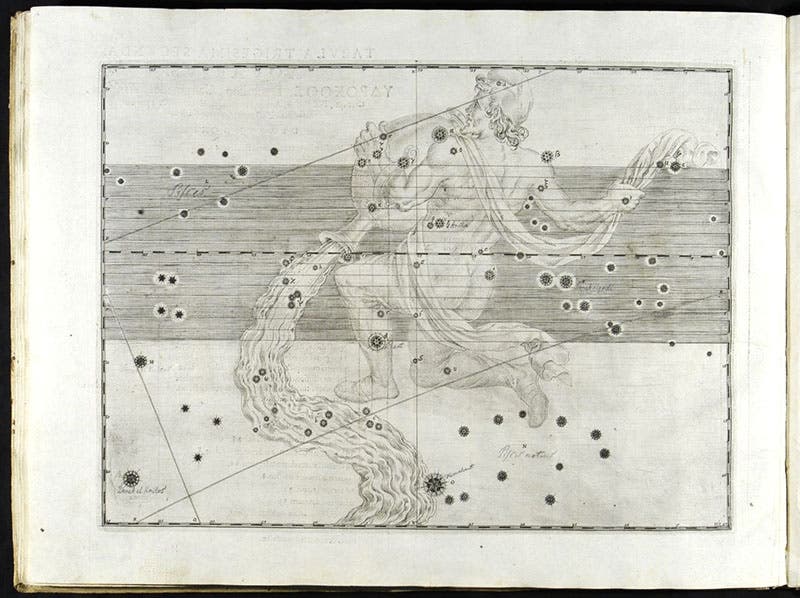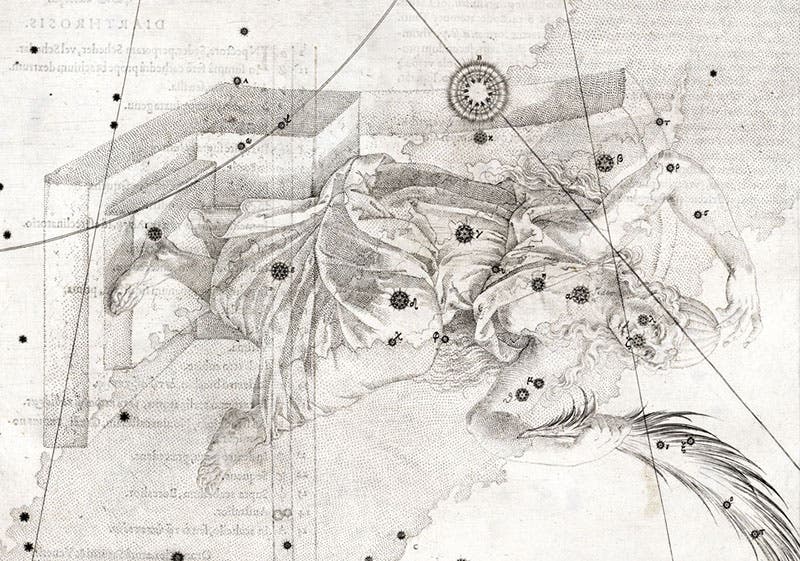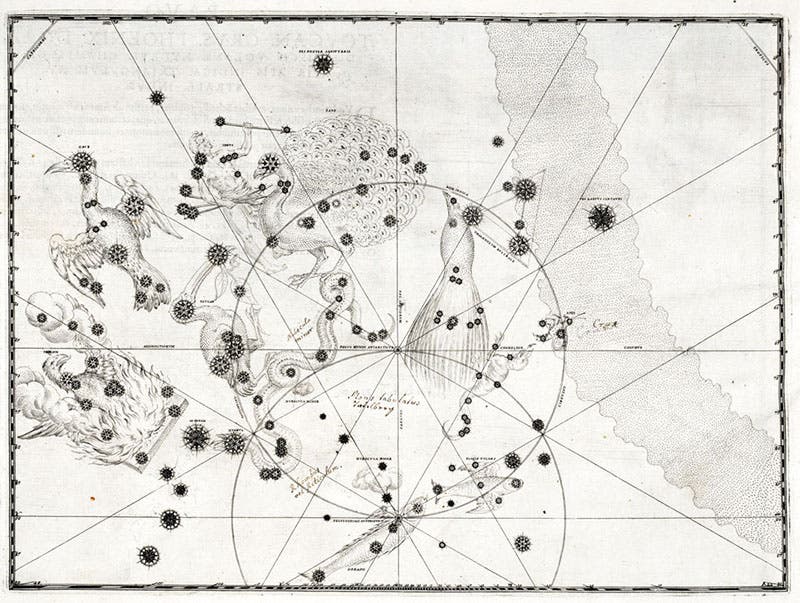Scientist of the Day - Johann Bayer
Johann Bayer, a German lawyer and astronomer, died Mar. 7, 1625, at about age 52. In 1603, Bayer published a star atlas, the Uranometria, that is usually called, and properly so, the first modern star atlas. It contained 51 large star charts, one for each of the traditional 48 constellations, plus a map of the newly discovered southern constellations, and two planispheres of the northern and southern skies. Star maps before Bayer’s were based on the star catalog of Ptolemy of Alexandia, compiled about 140 C.E. Bayer’s star positions were taken from the much more recent catalog of Tycho Brahe, which only became available about 1600, and the stars were carefully plotted onto grids that provide a backdrop for each plate.
To the non-astronomer, the most striking features of the plates are the attractive constellation figures. We display here the plates for Taurus, Orion, Centaurus, Aquarius, and Cassiopeia. The constellations are presented in the traditional order, which means the 22 northern constellations come first, then the 12 constellations of the zodiac, followed by the 14 traditional southern constellations,
To the astronomer, Bayer’s atlas is significant, not only because the star positions are more accurate, but also because Bayer introduced the practice of designating bright stars by letters of the Greek alphabet. In our first image, a detail of plate 24, you can see that the star in the lower eye of the Bull is marked with a large symbol and labeled α (alpha), while the star symbol at the end of the upper horn is smaller and labeled β (beta). Bayer invented this practice, and the designations, which are still used, are known as Bayer letters.
In a detail of Centaurus, the bright star that forms the front hoof is marked with an alpha (fourth image). And thus the label “alpha Centauri” was born. Each star chart has, on the verso (reverse side), a listing of the stars depicted, with a description, and its new Greek-letter designation. In a detail of the back of the Centaurus plate, you can see the alpha star listed first, followed by beta, gamma, and delta (fifth image).
Another novelty of the Uranometria is that it depicts a stella nova, a new star that was not listed in ancient star catalogs. Tycho Brahe had observed a new star in Cassiopeia in 1572, one that appeared suddenly and brightly out of nowhere, and Bayer marked it with an enormous symbol at the top center of his Cassiopeia plate (sixth image).
Plate 49 of Bayer's Uranometria (seventh image) requires some explanation. In 1595-97, two Dutch navigators, Frederick de Houtman and Pieter Keyser, had been asked by a Dutch globe maker, Petrus Plancius, to record the positions of the southern stars while on a voyage to the Dutch East Indies. They did so, and either Houtman or Plancius divided them into 12 constellations and gave them names, such as Pavo the peacock, Phoenix, and Tucana the toucan. Plancius put them on a star globe, and Bayer included all 12 on a single plate in his atlas. We show most of that plate here, and you can see a detail in our post on Houtman, and learn more at our post on Plancius.
As a final (or really, initial) artistic touch, Bayer’s Uranometria has an engraved title page, which depicts Atlas on the left, temporarily relieved of his globe, which he has cleverly passed on to Hercules, on the right (last image).
Bayer’s Uranometria marked the beginning of what I have called the Golden Age of the Celestial Atlas, and we included it in an exhibit with that sub-title, and a main title: Out of this World. Here is a link to the Bayer entry. You might also wish to consult the Star Tales website maintained by Ian Ridpath, which is an excellent resource on the history of celestial cartography. Here is the entry on Bayer.
For more on the Golden Age, see our posts on the celestial alases of Julius Schiller, Johannes Hevelius, Ignace-Gaston Pardies, and John Flamsteed.
This is a revision of a post that first appeared on Mar. 7, 2016. Captions have been provided for all images, three new images have been added, and the text has been greatly expanded.
William B. Ashworth, Jr., Consultant for the History of Science, Linda Hall Library and Associate Professor emeritus, Department of History, University of Missouri-Kansas City. Comments or corrections are welcome; please direct to ashworthw@umkc.edu.

